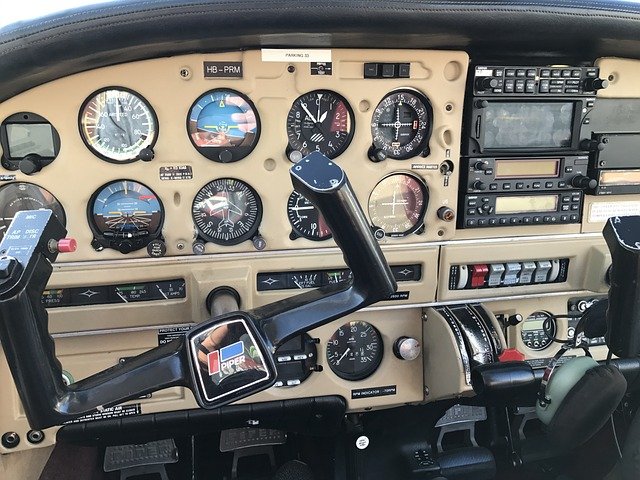How to find Best Flight Training Programs in the US
Before diving into flight training, it's vital to clarify personal objectives. Are you looking to become a private pilot, a commercial pilot, or pursue advanced ratings? Each goal may require different training paths. For example, those intending to fly commercially will need a commercial pilot’s license and possibly an airline transport pilot license. Defining clear objectives not only streamlines the search process but also helps in choosing a program that aligns with specific career aspirations.

Defining Your Aviation Training Goals
Before diving into flight training, it’s vital to clarify personal objectives. Are you looking to become a private pilot, a commercial pilot, or pursue advanced ratings? Each goal may require different training paths. For example, those intending to fly commercially will need a commercial pilot’s license and possibly an airline transport pilot license. Defining clear objectives not only streamlines the search process but also helps in choosing a program that aligns with specific career aspirations.
Evaluating Aviation Training Centers
When researching aviation training centers, several factors should influence your decision. First, check if the school is FAA-approved and has proper certifications. Look into the school’s reputation by reading reviews and speaking with alumni. The quality of training aircraft is equally important – newer planes with updated avionics provide better training experiences. Additionally, consider the instructor-to-student ratio, as individualized attention can significantly impact learning outcomes. Visit multiple schools if possible to get a feel for their culture and training environment.
Types of Flight School Services Available
Flight schools typically offer various programs catering to different needs. Part 61 schools provide more flexible training schedules but may take longer to complete, while Part 141 schools follow a structured curriculum approved by the FAA, often allowing students to earn their licenses with fewer flight hours. Many schools offer specialized programs like instrument rating, multi-engine training, and certified flight instructor courses. Some even provide accelerated programs where students can earn their licenses in a condensed timeframe, though these are often more intensive and expensive.
Commercial Pilot Training Requirements
For those aiming for a career as a commercial pilot, understanding the requirements is crucial. Commercial pilot training is more rigorous than private pilot training, requiring a minimum of 250 flight hours (compared to 40 hours for private pilots). This includes specific hours of cross-country flight, night flying, and instrument time. Many commercial pilot training programs offer pathway programs with regional airlines, providing a clearer career trajectory. Look for schools that have strong industry connections and placement records with airlines or other commercial aviation operations.
Finding Private Pilot Courses That Match Your Needs
Private pilot courses serve as the foundation for all advanced aviation training. When selecting a private pilot course, consider the training methodology – some schools emphasize simulator training before actual flying, while others get you in the cockpit sooner. Examine the curriculum to ensure it covers all necessary aspects like navigation, radio communication, emergency procedures, and weather theory. The quality of ground school instruction is equally important as flight instruction, as theoretical knowledge forms the basis for practical application.
Understanding Aviation Training Program Costs
Flight training represents a significant financial investment. Costs vary widely based on location, program structure, and training aircraft. On average, obtaining a private pilot license can cost between $8,000 to $15,000, while a complete professional pilot program leading to commercial certification with additional ratings can range from $50,000 to over $100,000.
| Program Type | Typical Cost Range | Duration | Notes |
|---|---|---|---|
| Private Pilot License (PPL) | $8,000 - $15,000 | 3-6 months | Entry-level certification |
| Commercial Pilot License (CPL) | $25,000 - $40,000 | 6-12 months | Requires PPL as prerequisite |
| Instrument Rating | $7,000 - $10,000 | 2-3 months | Add-on to PPL |
| Multi-Engine Rating | $3,000 - $6,000 | 1-2 weeks | Typically added to CPL |
| Certified Flight Instructor (CFI) | $4,000 - $8,000 | 1-3 months | Way to build hours while earning |
| ATP Certification Training Program | $4,000 - $5,000 | 10 days | Required for airline transport pilots |
| Complete Professional Pilot Program | $50,000 - $100,000+ | 1-2 years | Zero to commercial with all ratings |
Prices, rates, or cost estimates mentioned in this article are based on the latest available information but may change over time. Independent research is advised before making financial decisions.
Selecting the Right Location for Your Training
The geographical location of your flight training can significantly impact both your learning experience and career prospects. Training in areas with varied weather conditions provides valuable experience handling different flying scenarios. However, regions with consistently good weather allow for fewer training delays and potentially faster program completion. Some students choose to train near major airline hubs to increase networking opportunities and job prospects after graduation. Consider factors like cost of living, climate patterns, and airspace complexity when selecting a location for your flight training.
Researching School Reputation and Graduate Success
A flight school’s track record speaks volumes about the quality of its training programs. Research graduation rates, certification pass rates, and average time to completion for students. Many reputable schools publish these statistics on their websites. Additionally, look into where graduates are employed after completing their training. Schools with strong industry connections often help graduates secure positions with regional airlines, charter companies, or corporate flight departments. Reach out to alumni through social media or professional networks to get firsthand accounts of their training experiences and career trajectories post-graduation.
The path to becoming a pilot requires careful consideration of various factors. By thoroughly researching aviation training programs, understanding costs, and aligning your choice with your career goals, you can make an informed decision that sets the foundation for a successful aviation career. Remember that the best flight training program is ultimately the one that meets your specific needs, budget, and career aspirations.




